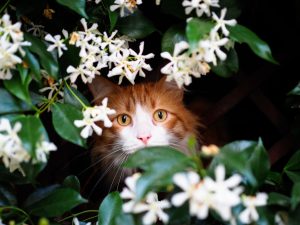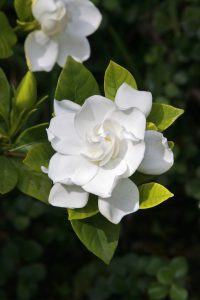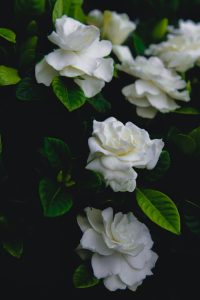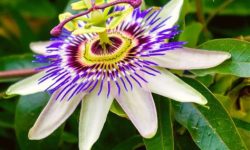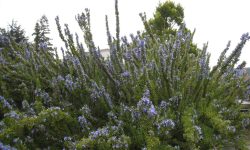Jasmine Vs Gardenia
Jasmine vs gardenia are two beautiful and fragrant flowers that are often compared due to their similar qualities. In this blog post, we will explore the characteristics of both jasmine and gardenia, including their growing conditions, aroma and fragrance comparison, and their uses in perfumery. Additionally, we will discuss how to care for jasmine and gardenia plants, allowing you to enjoy these delightful blooms in your own garden.
Whether you are a fan of their sweet and intoxicating scents, or you simply appreciate their beauty, understanding the differences and similarities between jasmine and gardenia can help you choose the best option for your own green space. By the end of this post, you’ll have a better understanding of these two wonderful plants, and be well-equipped to care for them and enjoy their delightful presence in your home or garden.
Characteristics of Jasmine and Gardenia
Jasmine Vs Gardenia are both known for their beautiful and fragrant flowers. Jasmine plants are typically climbing vines with delicate, star-shaped white flowers. Their fragrance is sweet and floral, often used in perfumes and tea. Gardenia, on the other hand, is a shrub with glossy green leaves and creamy white blooms. The scent of gardenia is often described as sweet and intoxicating, with a hint of citrus. Both plants are prized for their elegant appearance and aromatic flowers.
One of the main differences between jasmine and gardenia is their growth habits. Jasmine vines are known for their ability to climb and cover trellises, fences, and walls. In contrast, gardenia shrubs have a more compact and bushy growth habit. This makes them ideal for use as hedges, borders, or potted plants. In terms of care, jasmine requires regular pruning to keep it from becoming too overgrown, while gardenias benefit from regular fertilization to promote healthy growth and abundant blooms.
When it comes to hardiness, jasmine is generally more tolerant of a wider range of growing conditions. It can thrive in various soil types and is relatively drought-tolerant once established. Gardenias, on the other hand, are more particular about their growing conditions. They prefer acidic soil with good drainage and thrive in a consistently moist environment. They are also more sensitive to temperature fluctuations and may require protection during harsh winters.
Growing Conditions for Jasmine and Gardenia
Jasmine and Gardenia are two popular flowering plants known for their beautiful and fragrant blooms. In order to ensure that these plants thrive and produce abundant flowers, it is important to provide them with the right growing conditions. Both plants prefer to be situated in a location that receives plenty of bright, indirect sunlight. They can tolerate some morning sun, but too much direct sunlight can scorch their delicate leaves.
When it comes to temperature, jasmine and gardenia prefer warm climates. They do best in temperatures between 60 and 75 degrees Fahrenheit. In cooler climates, these plants can be grown indoors as long as they are placed in a warm, sunny spot. They are also sensitive to cold drafts, so it is important to keep them away from doors and windows during the winter months.
Proper soil is essential for the health of jasmine and gardenia plants. They prefer a well-draining, slightly acidic soil that is rich in organic matter. A mix of peat moss, pine bark, and perlite is ideal for these plants. Additionally, consistent moisture is important, but it is crucial to avoid waterlogged conditions, as this can lead to root rot. It is best to water these plants when the top inch of soil feels dry to the touch.
Finally, jasmine and gardenia plants benefit from regular fertilization. They can be fed with a balanced, water-soluble fertilizer every 4-6 weeks during the growing season. Be sure to follow the manufacturer’s instructions for application and dilution to prevent fertilizer burn. With the right growing conditions, jasmine and gardenia plants can thrive and reward gardeners with their exquisite blossoms.
Aroma and Fragrance Comparison of Jasmine and Gardenia
Jasmine and gardenia are two of the most beloved flowers in the world, not only for their beauty but also for their delightful scent. When it comes to comparing the aroma and fragrance of jasmine and gardenia, there are some distinct differences that make each flower unique.
One of the key differences between jasmine and gardenia is their scent profile. Jasmine has a sweet, exotic, and warm fragrance with floral and fruity notes, while gardenia has a more intense, rich, and creamy scent with hints of coconut and vanilla.
Another factor to consider when comparing the aroma and fragrance of jasmine and gardenia is their intensity. Jasmine is known for its powerful and heady fragrance, which can fill an entire room with its intoxicating aroma. On the other hand, gardenia has a more subtle and delicate scent that is often described as being sensual and sophisticated.
In addition to their scent profile and intensity, jasmine and gardenia also differ in their uses in perfumery. While jasmine is often used as a top or middle note in perfumes, gardenia is typically used as a base note to add depth and complexity to the fragrance.
Uses of Jasmine and Gardenia in Perfumery
Jasmine and Gardenia are two of the most popular and widely used flowers in the world of perfumery. Their intoxicating scents are highly sought after and have been used in fragrances for centuries.
Gardenia, with its sweet, creamy aroma, is often used as a middle note in perfumes. It adds a rich, opulent quality to a fragrance and is often used in floral compositions.
Jasmine, on the other hand, is known for its sweet, exotic fragrance. It is often used as a top note in perfumes and adds a light, floral quality to a fragrance.
Both Jasmine and Gardenia are also used in the production of essential oils, which are then used to create perfumes, colognes, and other fragranced products. Their versatile scents make them suitable for a wide range of applications in perfumery.
Caring for Jasmine and Gardenia Plants
There are several things to keep in mind when caring for jasmine and gardenia plants. First and foremost, these plants thrive in well-draining, acidic soil. It’s important to make sure the soil is not too dry or waterlogged, as this can lead to root rot. Both jasmine and gardenia plants also prefer full to partial sunlight, so be sure to place them in a location where they can receive adequate light.
When it comes to watering, it’s important to keep the soil consistently moist, but not overly wet. Be mindful of the weather conditions and adjust your watering schedule accordingly. In addition, it’s a good idea to fertilize these plants regularly to promote healthy growth and blooming. Use a fertilizer specifically formulated for acid-loving plants to ensure they are getting the proper nutrients.
Pruning is another important aspect of caring for jasmine and gardenia plants. Regular pruning helps promote new growth and maintains the shape of the plant. Be sure to remove any dead or diseased branches, as well as any spent flowers to encourage new blooms. Additionally, both jasmine and gardenia plants can benefit from a layer of mulch to help retain moisture and protect the roots from extreme temperatures.
Lastly, keep an eye out for pests and diseases that can affect jasmine and gardenia plants. Common pests include aphids, whiteflies, and scale insects. If you notice any signs of infestation, it’s important to take action to prevent further damage. Regularly inspecting the plants and addressing any issues promptly is key to keeping them healthy and thriving.
Frequently Asked Questions
What are the main characteristics of Jasmine Vs Gardenia plants?
Jasmine plants are known for their star-shaped flowers and sweet fragrance, while Gardenia plants are known for their waxy, white flowers and strong, sweet scent.
What are the ideal growing conditions for Jasmine and Gardenia plants?
Jasmine plants thrive in well-drained soil and full sunlight, while Gardenia plants prefer acidic soil, high humidity, and partial shade.
How do the aromas and fragrances of Jasmine Vs Gardenia compare?
Jasmine has a light, floral fragrance with a hint of sweetness, while Gardenia has a much stronger, heady scent with notes of vanilla and coconut.
In what ways are Jasmine and Gardenia used in perfumery?
Jasmine is a popular choice for adding a sweet, floral note to perfumes, while Gardenia is used to create intense, exotic fragrances.
What are some tips for caring for Jasmine Vs Gardenia plants?
Both plants require regular watering, well-draining soil, and protection from harsh sunlight. Pruning and fertilizing are also essential for maintaining healthy plants.

